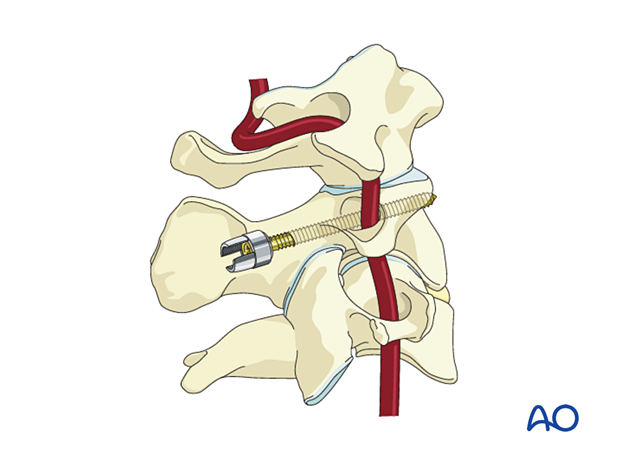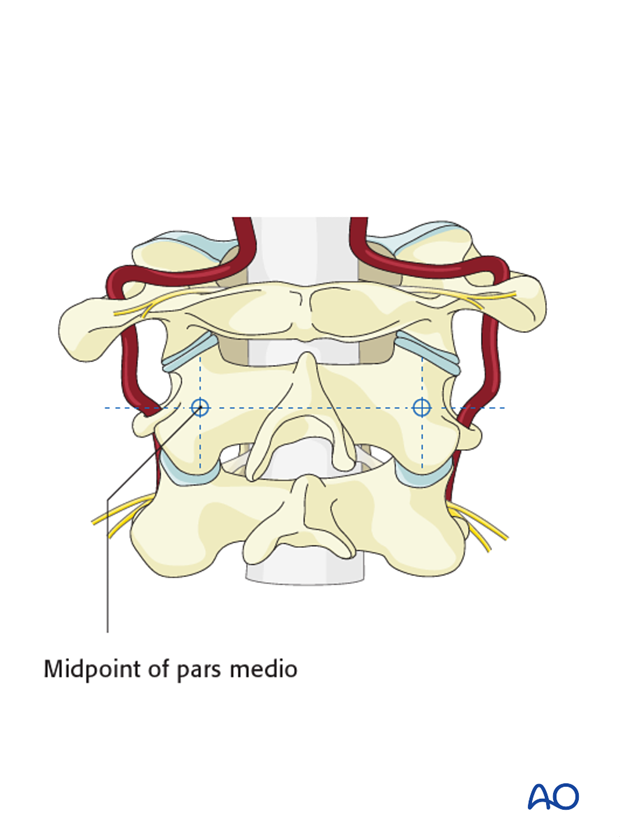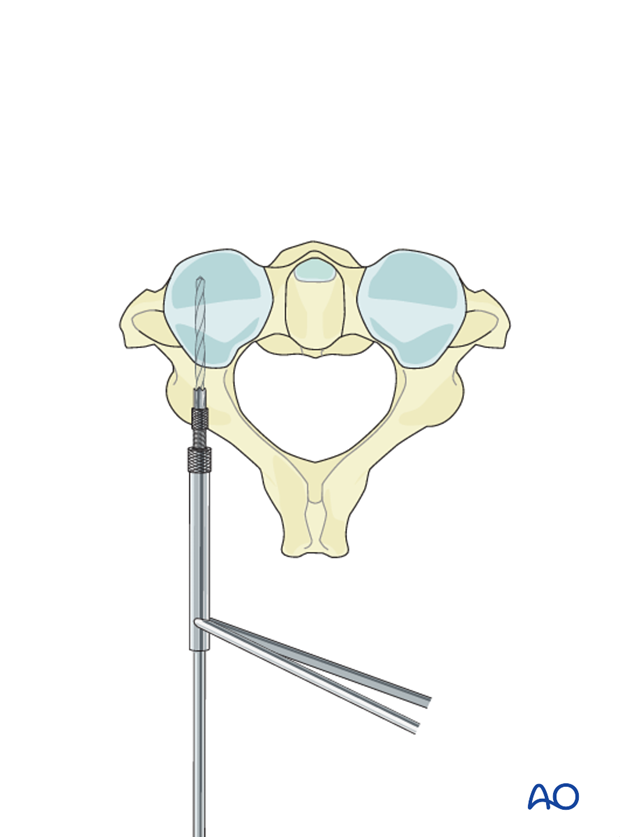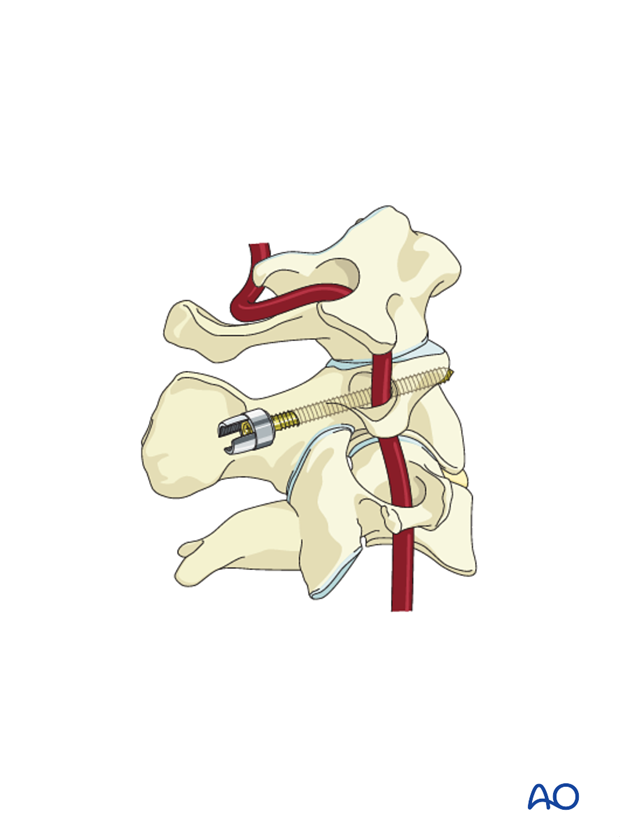C2 pars screw insertion
1. Introduction
Pars screws in C2 may be used in the management of trauma, tumors, and degenerative conditions in the cervical spine.

2. C2 pedicle screw vs pars screw
When only a C1–C2 arthrodesis is done, a C2 pedicle screw is preferred to a C2 pars screw. This is because the pars screw starting hole is more distal and therefore requires more muscle dissection. But, if a C2 pedicle screw is not possible, a C2 pars screw can be used.

3. Preoperative evaluation
A preoperative CT image must be evaluated to determine if a C2 pars screw can be used. Some patients have a pars that is too small to accept such a screw.
4. Screw entry point
The starting point of the C2 pars screw is 3–4 mm cranial to the C2–C3 facet joint and in the midpoint of the pars mediolaterally.
Make a small burr hole as the starting point for the transarticular screw.

5. Screw trajectory
The trajectory should be as dorsal as possible without perforating the dorsal cortex of the C2 pars.

6. Screw insertion
Tap, measure the length, and place the screw. Typically, a unicortical screw that is longer than 16 mm is adequate.














